MARNE - The First Battle of the Marne - 1914
Year of visit: 2008
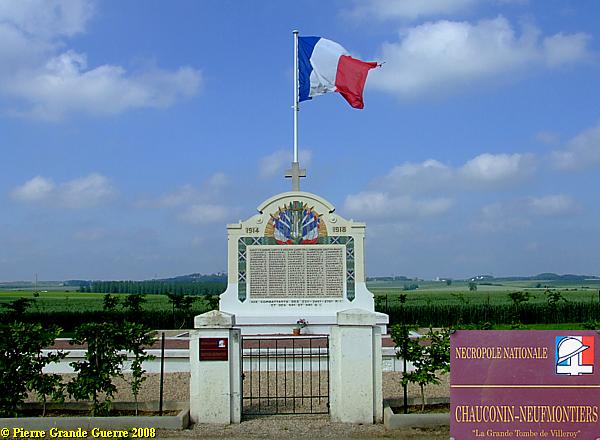
From Villers Cotterêts we continue our trip, now concentrating on locations of the First Battle of the Marne, in particular in the valley of the Ourq river. We will visit: Betz - Etrépilly - Barcy - Chambry - Penchard - Chauconin-Neufmontiers - Meaux - La Ferté sous Jouarre - Montreuil aux Lions.

We start near Betz at the Bois de Montrolles .
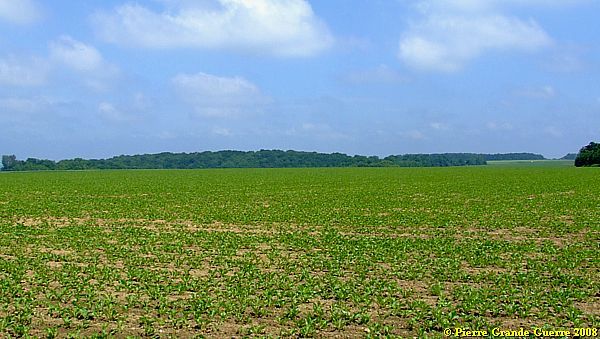
Along the D 332 outside the village of Betz lies the " Betz - Bois de Montrolles " French National Cemetery. The memorial obelisque is dedicated to the soldiers of the Army of Paris. The mass grave in front of it contains 21 soldiers, who fell during the Battle of the Ourq.
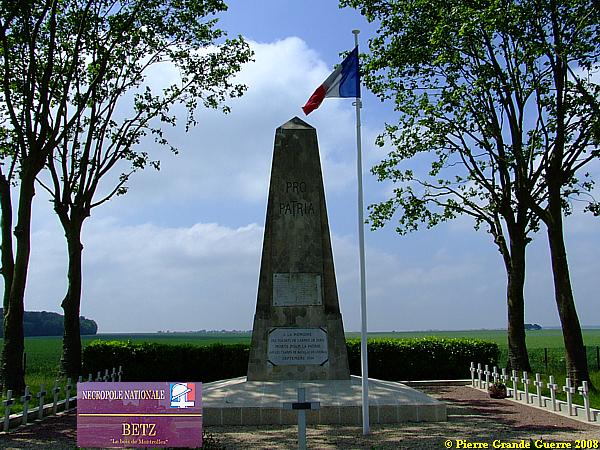
After 2 days of fighting in Montrolles Wood the French 61st Division knew to force the Germans out of the wood during the evening of 8 September 1914.
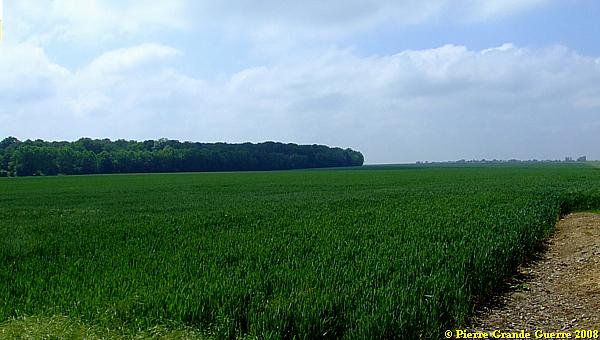
The First Battle of the Marne - 5 - 10 September 1914
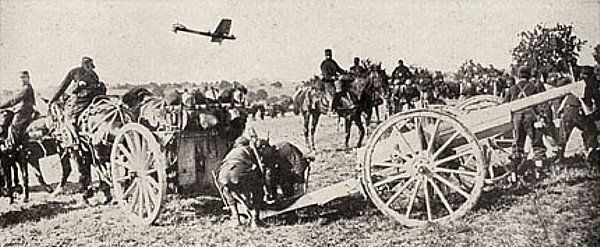
On 4 September 1914 Général Galliéni, Commander of the Army of Paris, offered Général Joffre important intelligence, perhaps for the first time in history based on air reconnaissance. Galliéni detected that Von Kluck's Army has isolated itself from Von Bülow’s 2nd Army and left it's flanks open. Galliéni urged Joffre to take this chance for a counter offensive.
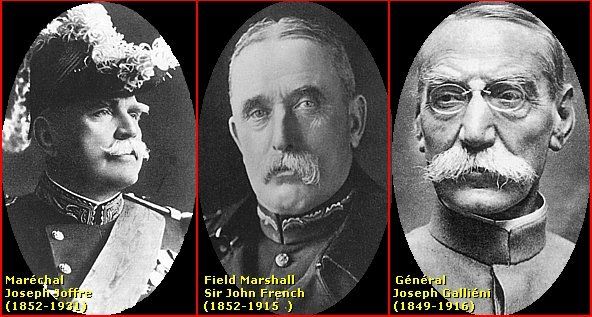
Galliéni's Army of Paris consisted of units from the 3rd and 6th Armies, and a number of reserve divisions. Together with the British Expeditionary Force under General French, the French 6th Army under General Manoury, and the 5th Army under General Franchet d' Esperey, they attacked Von Kluck's 1st Army on 5 September north and east of Paris and in the valley of the river Ourq.
In the east Général Foch's 9th Amy attacked Von Bülow’s 2nd Army, and more to the east Général Langle de Cary's 4th Army attacked the Grand Duke Albrecht's 4th Army.
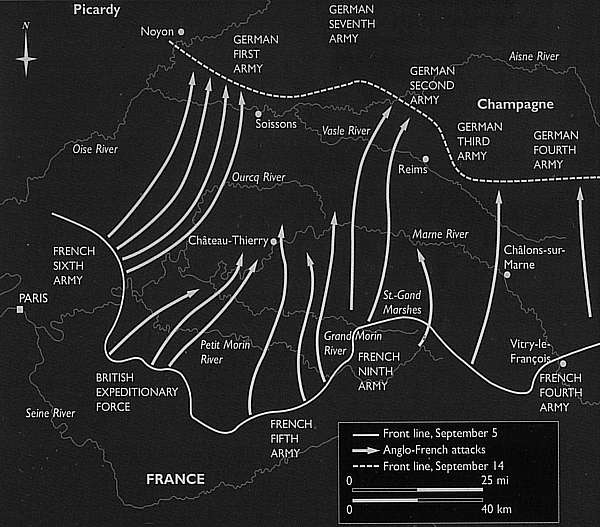
Late on 6 September the right wing of the German 1st Army withdrawed under pressure of the Allies northward to Betz and La Ferté sous Jouarre.
From Paris 6.000 troops were hastily transported in busses and taxicabs to the west of Meaux, where the German 2nd Corps of the 1st Army still resisted along a line northward from Meaux via Monthyon, Chambry, and Barcy, to Betz. This was the beginning of the Battle of the Ourq, which lasted 5 days.
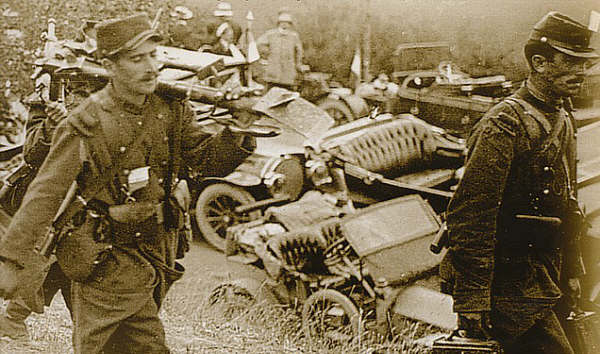
In the evening of 7 September the left wing of the German 1st Army retreated on the line Montmirail - Château Thierry - Betz.
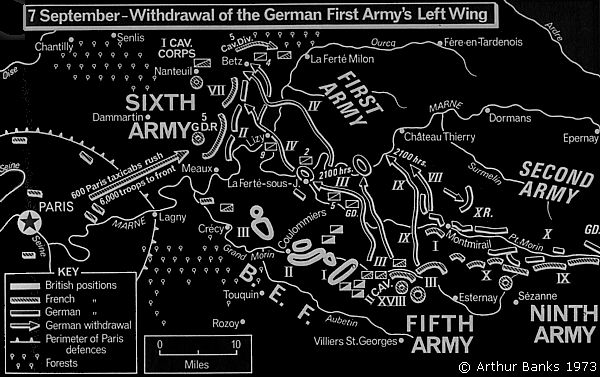
On 8 September the Allies were pushing the Germans further northward, with raids of the French 1st Cavalry Corps in the north near Betz and Viller Cotterèts, the 6th Army and the Army of Paris pushing beyond Meaux and Chauconin Neufmontiers, and the BEF reaching the south bank of the Marne near la Ferté sous Jouarre, and Château Thierry.
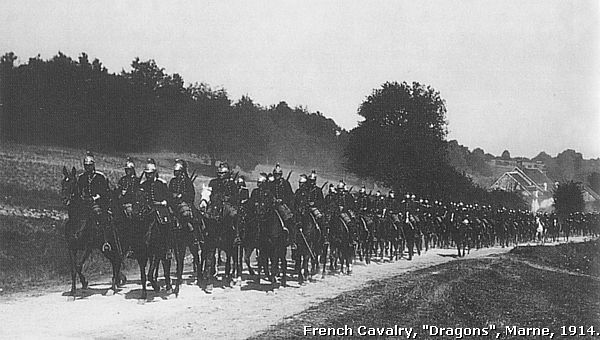
While Manoury was still fighting with Von Kluck's right wing near Villers Cotterèts and Betz the British crossed some bridges at Château Thierry and la Ferté sous Jouarre on 9 September.
On 10 September the BEF closed it's ranks with Manoury's 6th Army in the valley of the Ourq.
During the days of 10 until 12 September the German 1st and 2nd Army retreated northward, still fighting, towards prepared defensive positions behind the Aisne and the Vesle river and on the plateau of the Chemin des Dames.
The Battle of the Marne proved for the first time, that the German Armies were not completely invincible.

Paris had been saved. For the Allies the victory formed a huge boost in morale and confidence.
Von Moltke's changes on the original Von Schlieffenplan, and the the defeat of the Battle of the Marne made the Kaiser replace von Moltke immediately by General Von Falkenhayn.
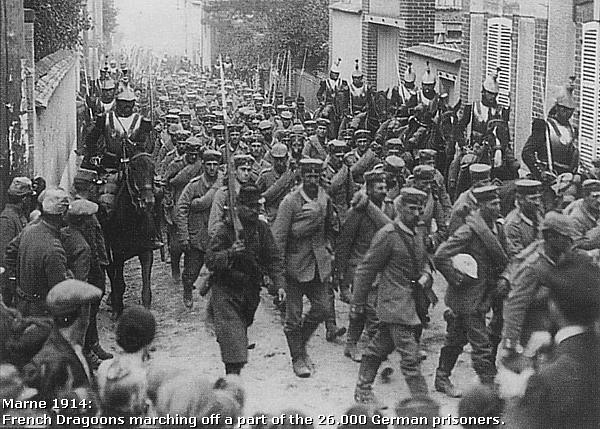
After this intermezzo we continue. Near the villages of Puisieux and Etrépilly, along the D 146 A3 ...
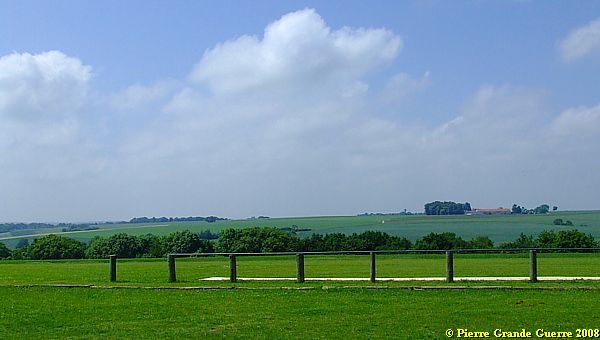
... lies La Ferme de Champfleury , Champfleury Farm. During the battle the farm formed the headquarters of General von Kluck.
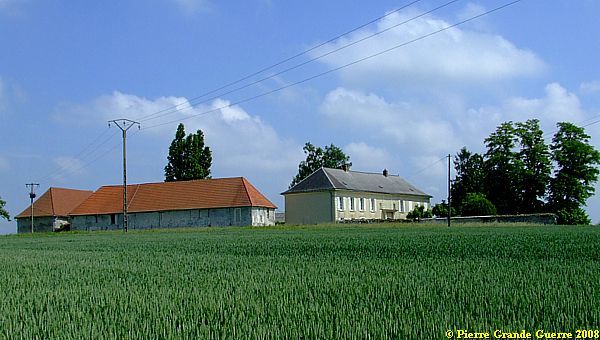
This is the southwestward panorama view, which General von Kluck had from his position.

From left to right in 3 parts: ....
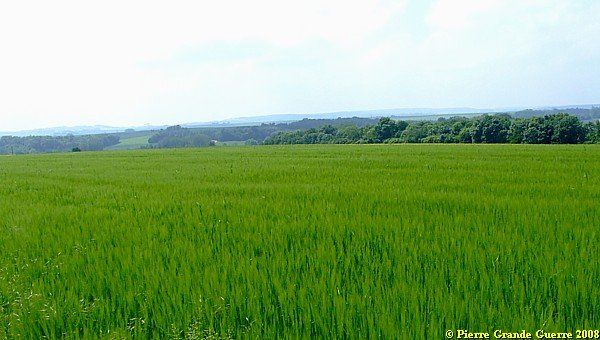
View in the direction of
Etrépilly, right on the horizon.
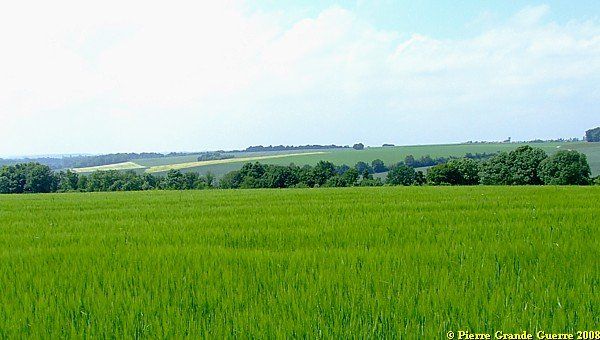
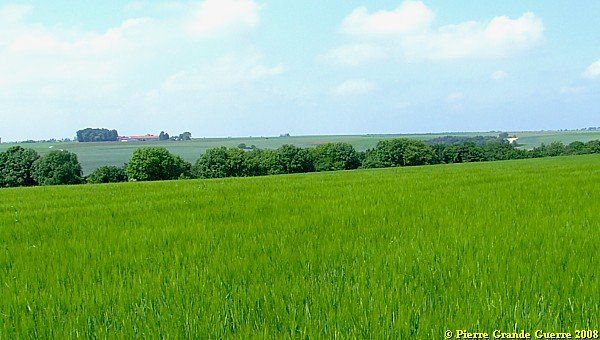
The French 56th Reserve Division - Champfleury Farm
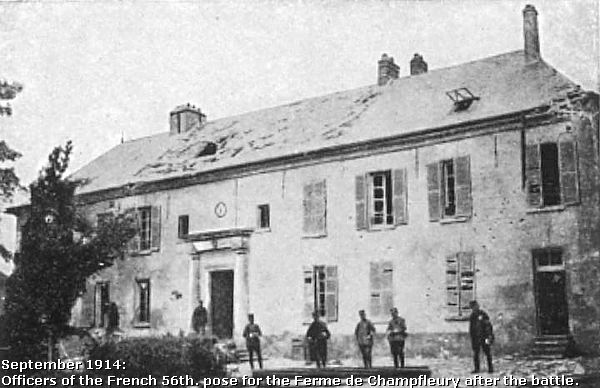
There was fierce fighting between troops of the French 56th Reserve Division (56e D.R.I) in the valley, trying to conquer the farm and it's surroundings.
The French 56th Reserve division launched numerous attacks on these heights, where it broke all counter offensives of German troops.
Champfleury Farm, the main position of the Germans, was vigorously defended, but after two unsuccessful attacks, it was finally conquered by the French on 9 September. Once in possession the French were bombarded from Etrépilly.

From Champfleury Farm we continue to the local, civilian cemetery of Etrépilly
.
The Germans were entrenched in the cemetery, where they managed to stop the attack on 7 September by the French 2nd. Zouaves Regiment.
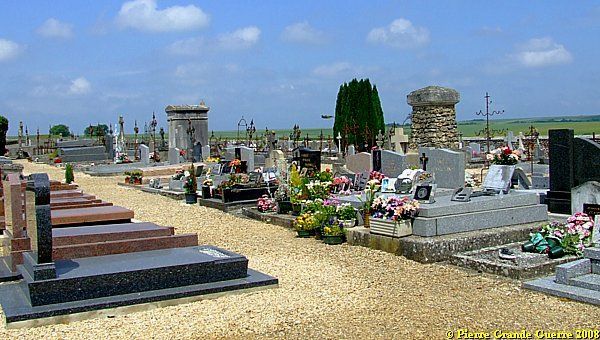
The French 2nd. Zouaves Regiment at Etrépilly
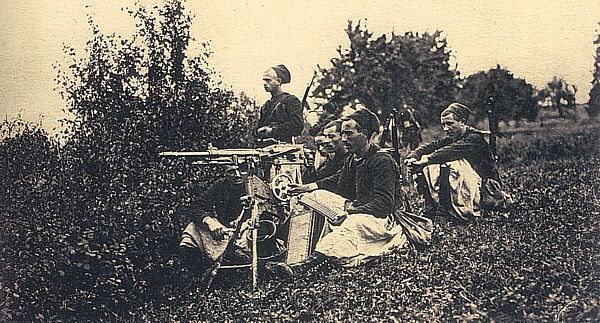
The French 2nd. Zouaves Regiment fought a bitter fight against the Germans in and around the village of Etrépilly in the valley of the Ourq.
Originally, in 1831, the Zouaves were founded and based in Algeria. In 1914 the Zouaves regiments were developped in a mix of Algerian soldiers and a majority of French soldiers.
The 2nd. Zouaves Regiment arrived from Barcy with their bayonets ready on their rifles. The Zouaves were surprised at their arrival at Etrépilly with German machine gun fire. They tried to keep the position along the walls of the cemetery, but in spite of their efforts, they had to abandon the plateau around, evacuate the village, and return to their trenches near Barcy.
Lieutenant-Colonel Dubujadoux, the regiment's commander, was killed near the entrance under the west wall of the cemetery. Three quarters of the officers and half of the soldiers fell during this heroic charge. Amongst them was also the commander of the 4th Battalion and the 2nd Zouaves Regiment, Commandant d'Urbal.
Under pressure of new French attacks the Germans evacuated Etrépilly on 9 September. According to some inhabitants of the period, the Germans, before evacuating their positions on 9 September, would have burned in a hangar opposite the cemetery the corpses of their soldiers, killed in the fighting in Etrépilly. These residents claimed, the Germans also added the non-transportable, severely wounded men to the fire.
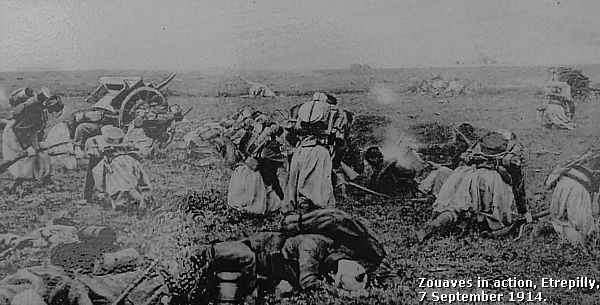
An inscription on a memorial cairn along the east wall:
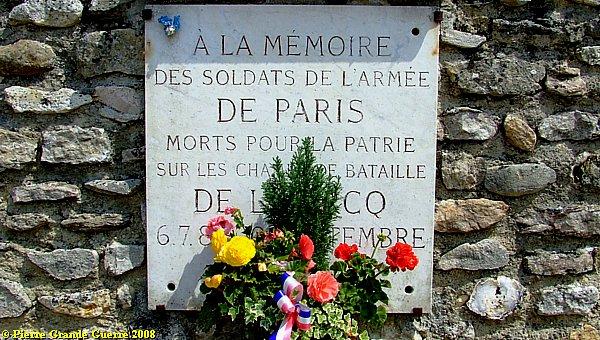
Along the same wall lies the grave of Henri Champain of the 354e R.I. killed on the 7th.
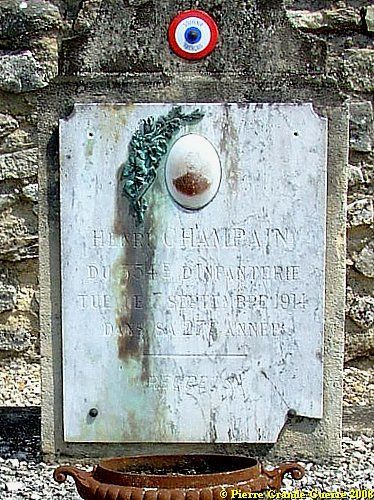
The hard to read tombstone for Louis Doucet, awarded with "Chevalier d'Honneur", killed on the 7th.
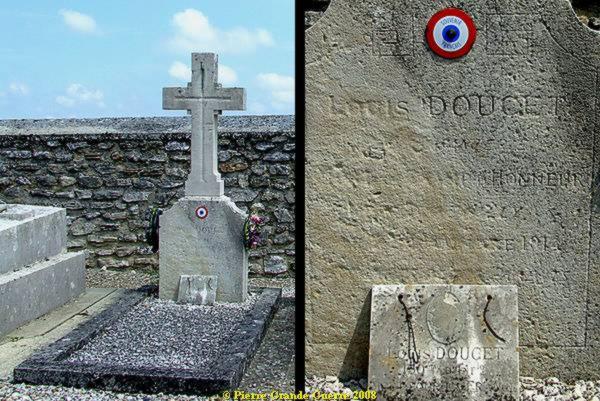
The grave of Corporal André Griette of the 350e I.R., who assisted in renewed attacks after the 7th, and who was killed also on the 7th ( and not the 8th ). Griette must have been a war hero. According to the inscription he had been awarded with the Medaille Militaire and the Croix de Guerre!
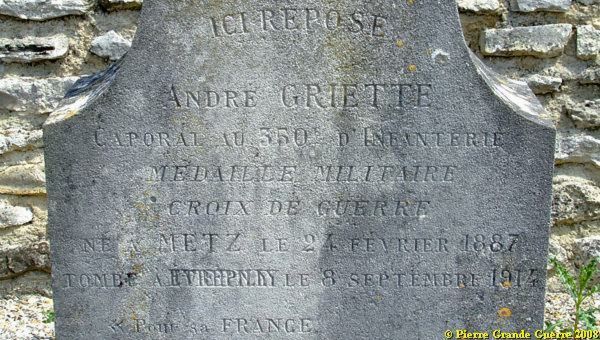
Outside the cemetery on the west, the road side of the wall:
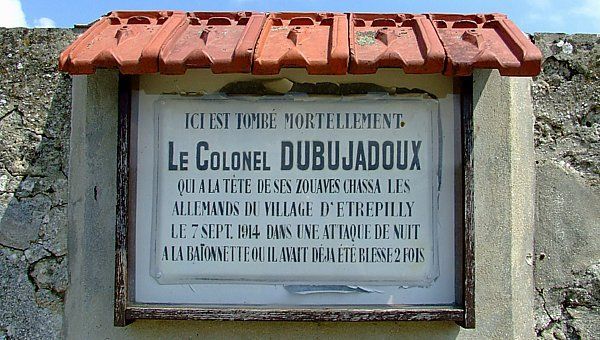
View over the east wall of the cemetery over the former battlefield.
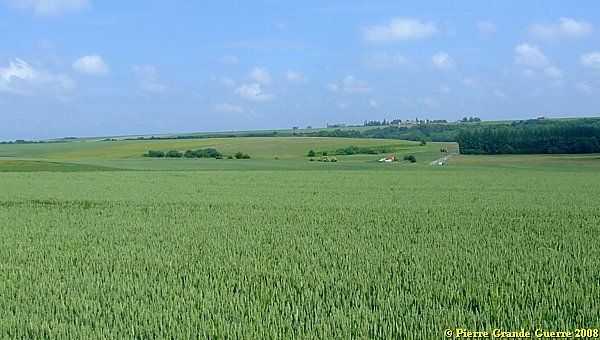
On the other side of the road at some 150 m. away, lies the French National Cemetery of Etrépilly .
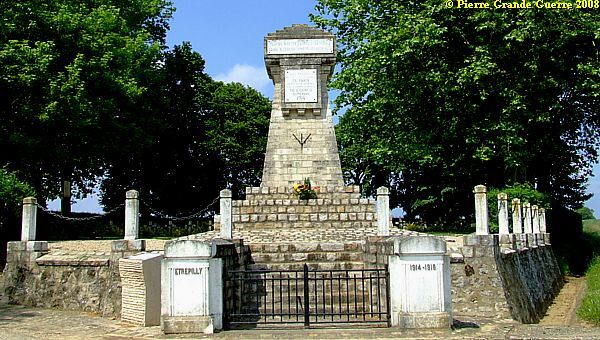
There is a Memorial with 2 inscriptions, dedicated to the Army of Paris.
A quote of the famous author, Victor Hugo:
"GLORY TO OUR ETERNAL FRANCE
GLORY TO THOSE WHO HAVE DIED FOR HER"
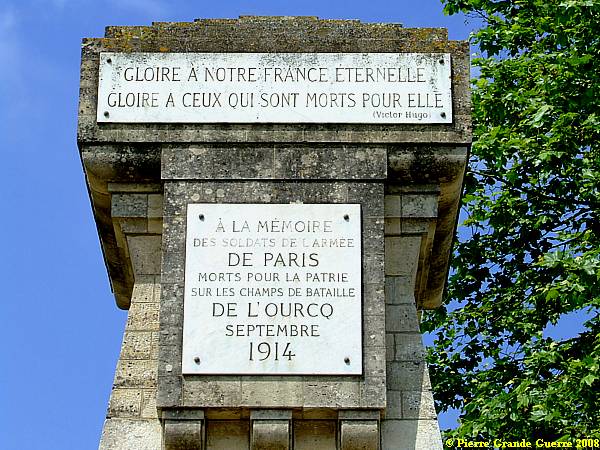
In the cemetery there are graves of soldiers killed near this spot during the period of 7-10 September 1914.
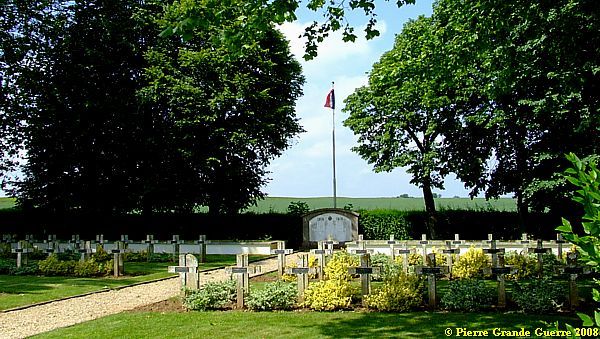
An ossuary contains the relics of 534 soldiers, which seem to represent all regiments and battalions, which were involved in the fighting here.

The first grave, at the right plot, is the grave of the heroic Lt. Colonel Victor Emile Dubujadoux.
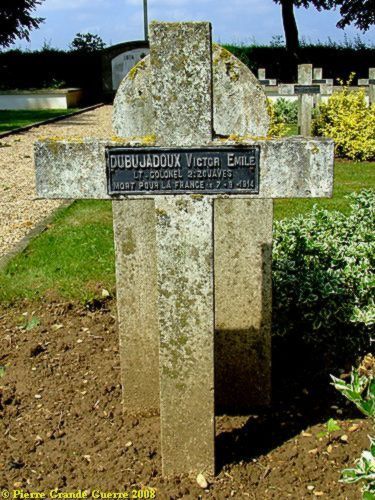

A view from the cemetery westward.
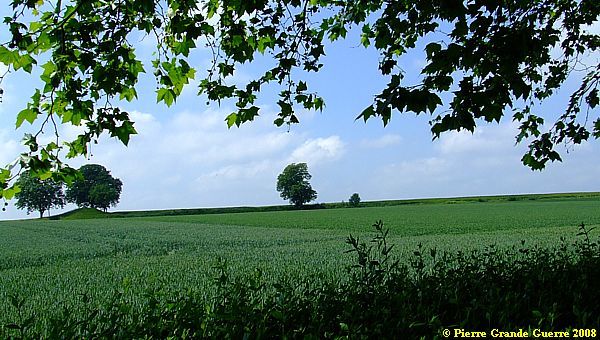
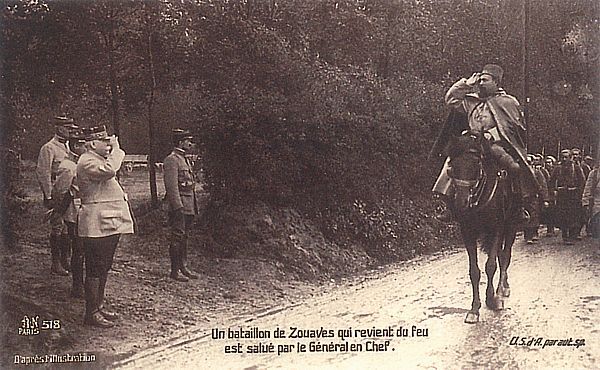
We continue along the D 97 to the outskirts of Barcy, and to the plateau around it, which was in possession of the German 1st Army on 4 September.
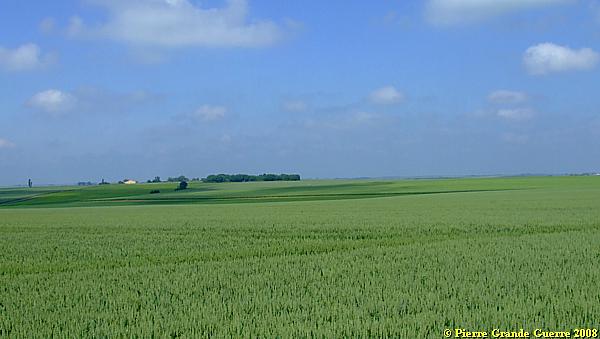
Around the Memorial of Notre Dame de la Marne, there were many bloody battles between 3 and 7 September.
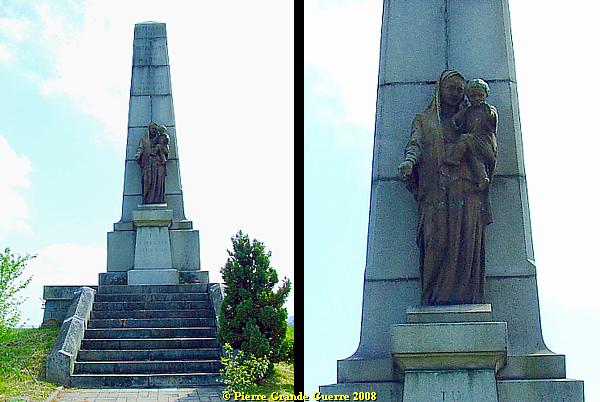
Next to the Madonna used to be a wartime cemetery. The inscription on the memorial:
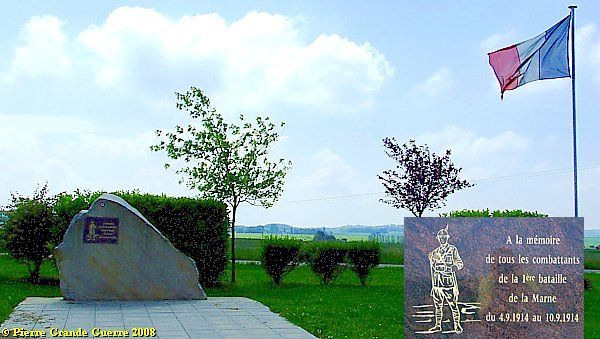
We continue for about 2 km. to the outskirts of Chambry, to the Chambry National Cemetery .
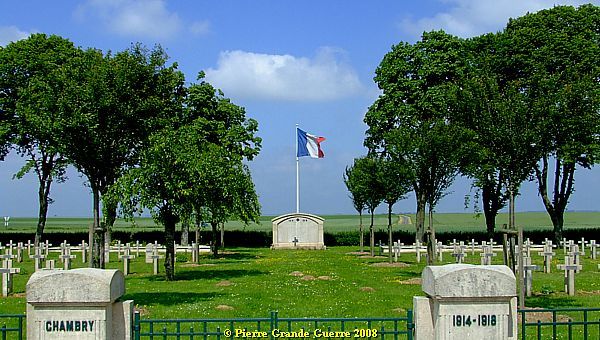
The cemetery contains 1.331 burials, mostly from the summer of 1914, of which 990 soldiers are buried in 4 ossuaries.
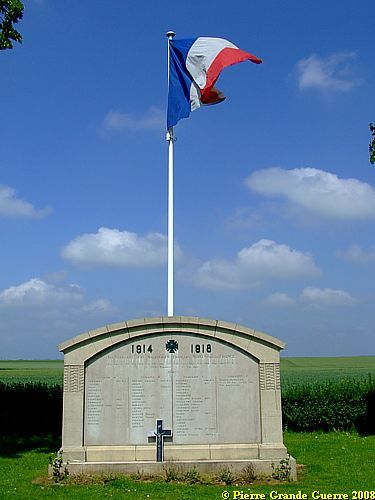
View from the cemetery over the former battlefield.
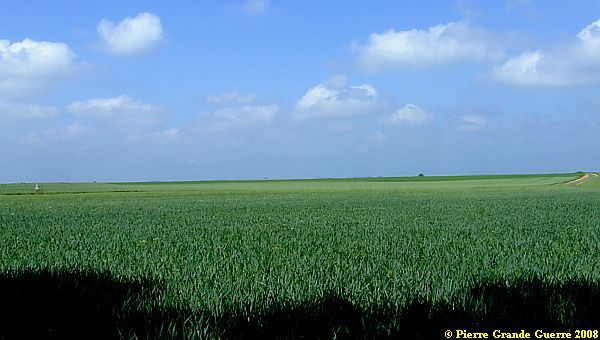
Some 500 m. furtheron: the Chambry Deutscher Soldatenfriedhof .
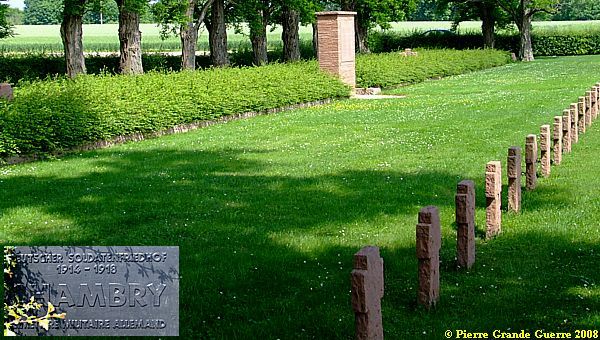
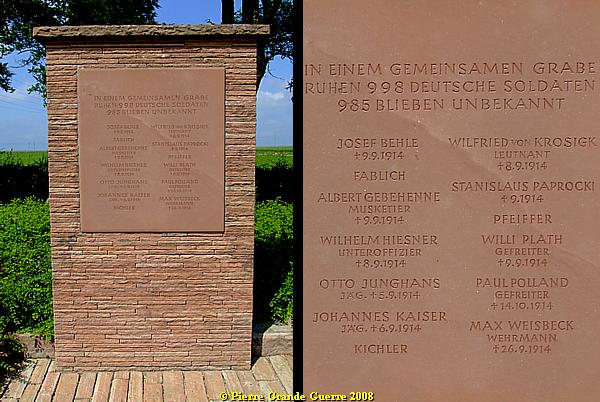
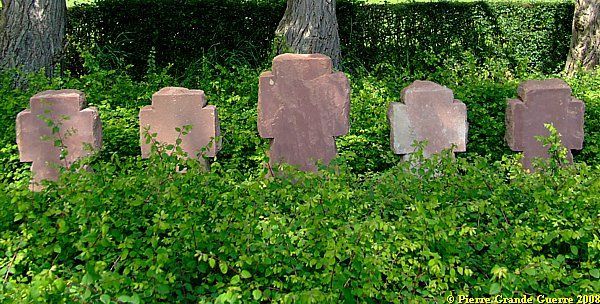
Sixty eight known German soldiers share a cross above their graves.

Quite remarkable is the lack of mentioning the ranks and the date of death on these early war days graves, as you usually see on crosses on German war cemeteries.
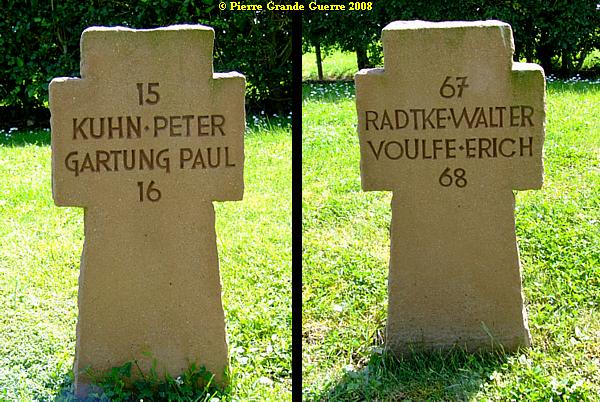
We continue to the village, to the local, civilian cemetery of Chambry . In 1914 the cemetery grounds ended, where the wall has no orange tiles on top of it anymore. Over the path, to the right, used to be another wall.
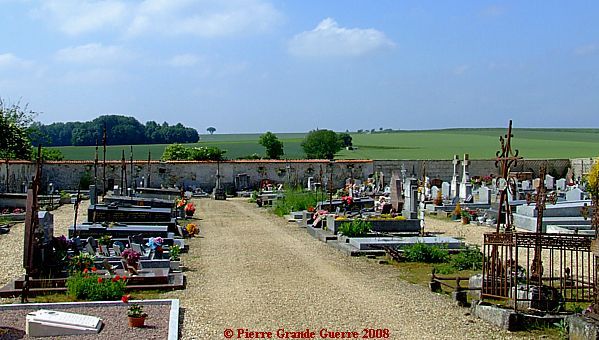
A relic of the old wall is still left with an interesting inscription:
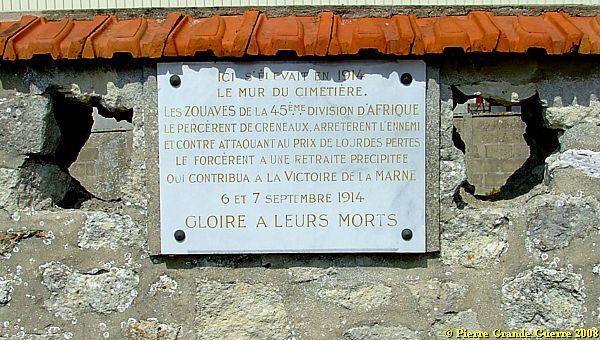
The grave of Henri Allaire, Corporal of the 7e de Zouaves who was killed on the 7th in the fields surrounding the cemetery.
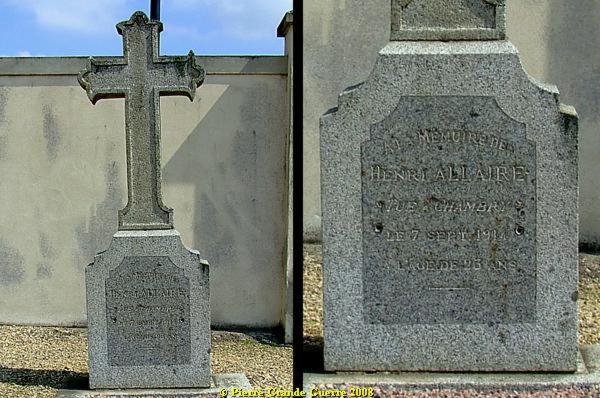
We continue to an in those days for troops important junction ...
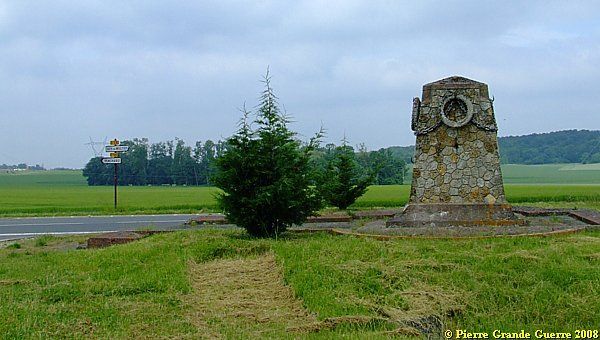
... of the D 140 from Paris and the C 2, near Penchard. Left to Monthyon, right to Penchard.
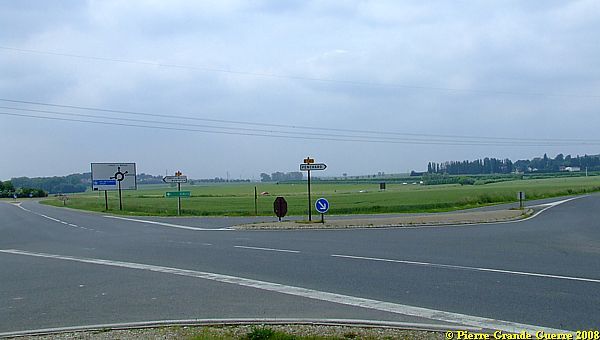
The Memorial of the Four Roads is dedicated to the Army of Paris.
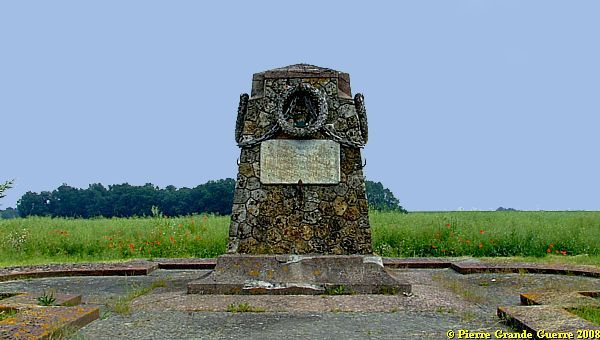
The texts of the inscriptions are the same as on the Memorial of Etrépilly.
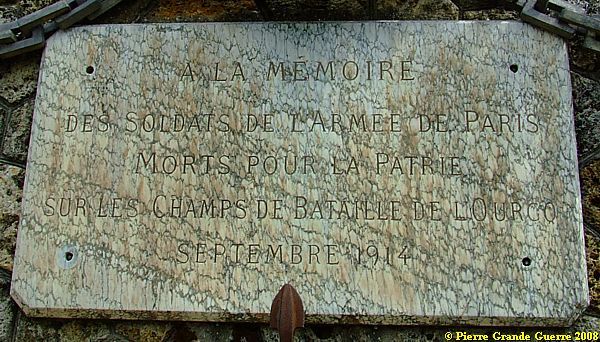
The same quote of Victor Hugo:
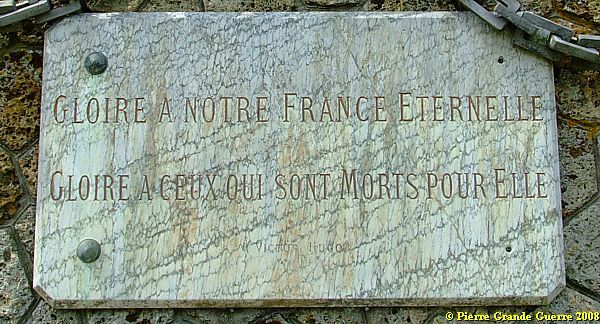
From the D 140 we turn right on the D 129, which offers a northward view at Monthyon.
On the Hill of Monthyon , near Meaux, the Germans installed an observation post with machine guns and artillery guns, which threatened Paris, some 15 km away.
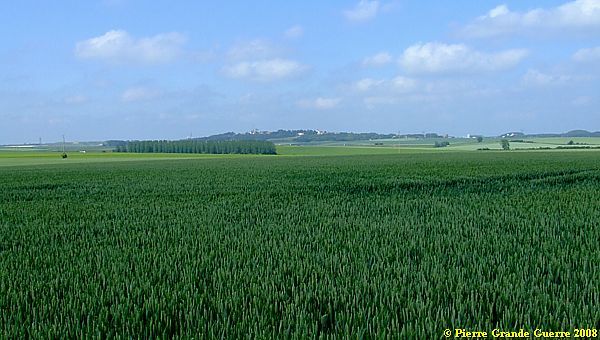
Along this road, west of Chauconin-Neufmontiers : " La Grande Tombe de Villeroy ", "The Great Grave of Villeroy".

The colourful mosaic ossuary contains the relics of 133 officers and soldiers, of which most of them were killed already on 5 September.

I marked the name of the in France famous poet, Lt. Charles Péguy.
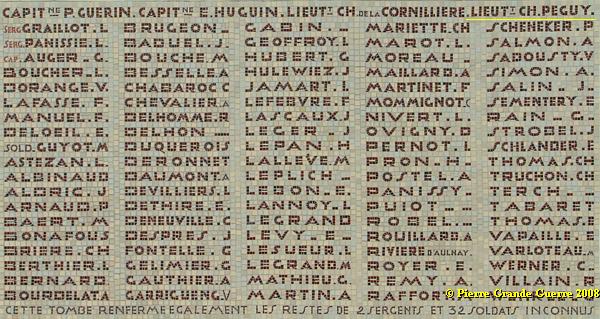
Tele view from the "Grande Tombe" to Monthuyon.
Monthuyon and Penchard were the most important targets for Peguy's 267e R.I. Nowadays the top is forbidden military terrain, rather ironically, for a communication post of the French Army.
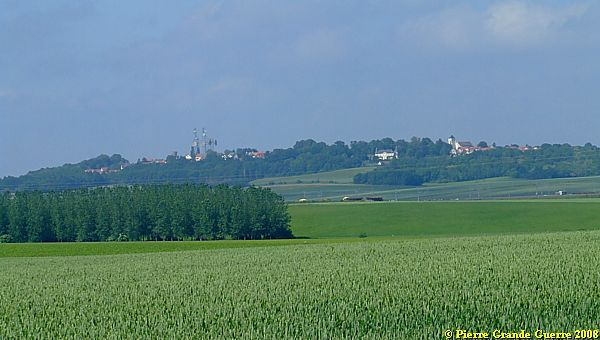
Hundred meters beyond the "Grande Tombe", on the other side of the road, is a dangerous (!) junction with a memorial for Lieutenant Charles Péguy.
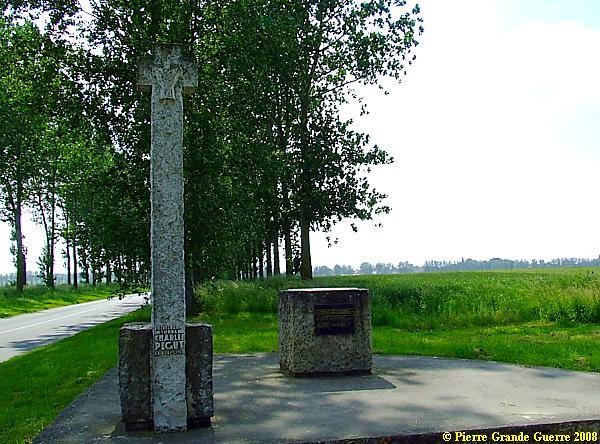
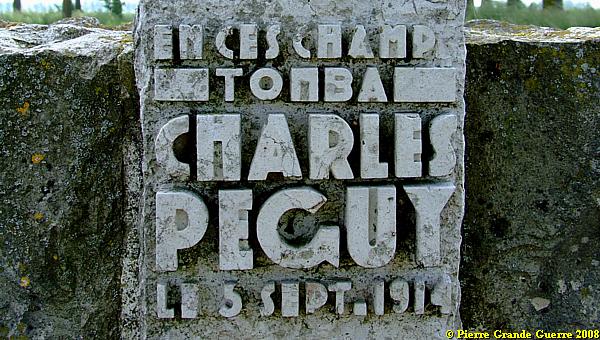
Next to the stèle is an inscription with a quote of a poem of Péguy:
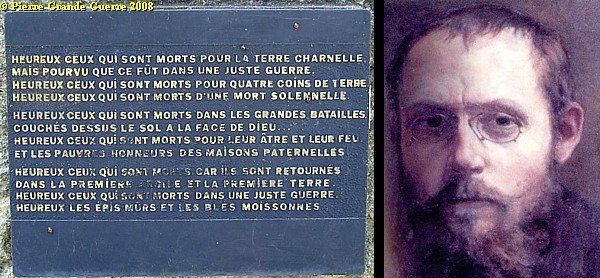
"HAPPY ARE THOSE WHO HAVE DIED FOR THE PROPER LAND
BUT UNDER RESERVATION THIS WILL BE A JUST WAR.
HAPPY ARE THOSE WHO HAVE DIED FOR THE FOUR CORNERS OF THE LAND.
HAPPY ARE THOSE WHO HAVE DIED FOR A SOLEMN DEATH.
HAPPY ARE THOSE WHO HAVE DIED IN THE GREAT BATTLES
LYING ON THE SOIL IN THE FACE OF GOD.
HAPPY ARE THOSE WHO HAVE DIED FOR THEIR STOVES AND THEIR FIRE
AND THEIR HUMBLE HONOURS OF PATERNAL HOUSES.
HAPPY ARE THOSE WHO HAVE DIED BECAUSE THEY HAVE RETURNED
IN THE FIRST CLAY AND THE FIRST LAND.
HAPPY ARE THOSE WHO HAVE DIED IN A JUST WAR.
HAPPY ARE THE RIPE EARS OF CORN AND THE EARNED GRAINS."
This is the field next to the Péguy memorial.
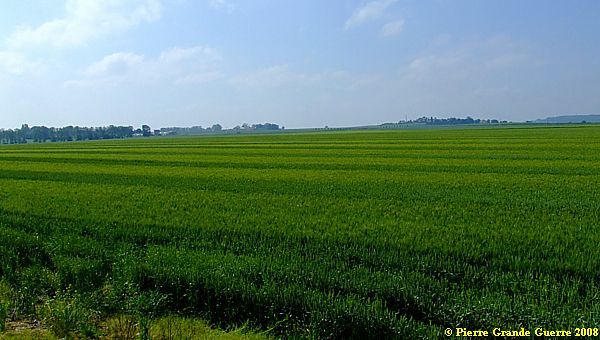
We make a detour along the traffic packed N3 to Paris, 4 km. west of Meaux, for a most disappointing experience: the green patina, bronze statue of Général Galliéni has disappeared! Only it's base is still left. Afterwards I got information, that the statue had been damaged by bronze thieves in February 2007. The statue seems to be returned on this spot recently.
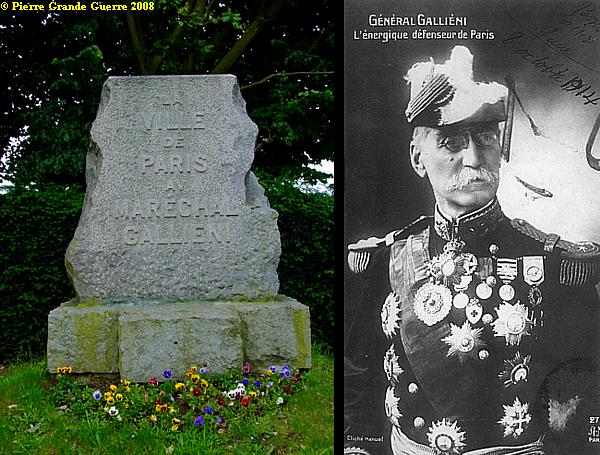
View from the statue base over the N3, in the direction of Monthyon with it's modern satellite discs.
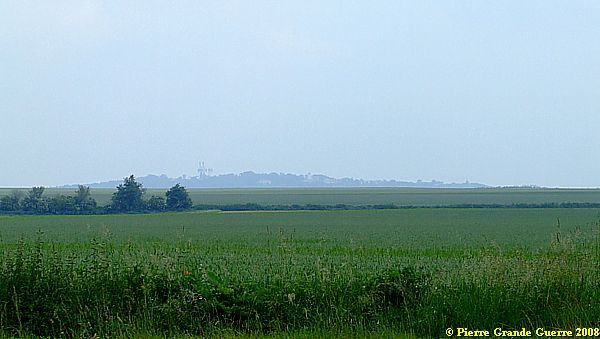
We continue to the banks of the Marne in the centre of La Ferté sous Jouarre.
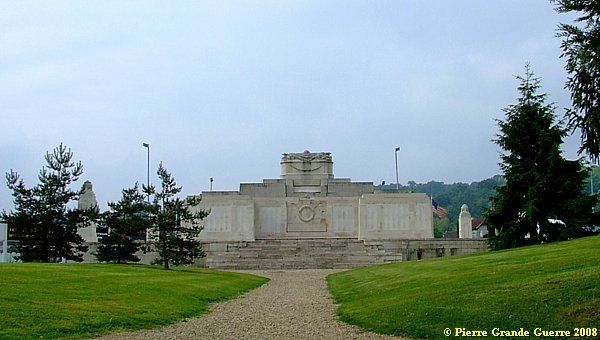
This is the British Memorial to the Missing, of Mons, Le Cateau, the Marne, and the Aisne of the period August - October 1914.
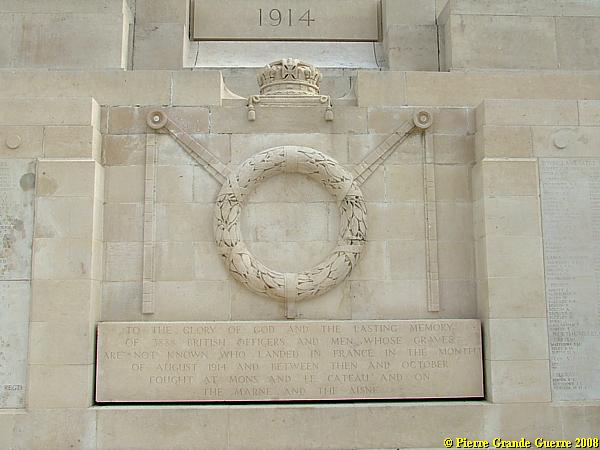

Some of the 3.888 names. These names are of Coldstream Guards without a known grave.
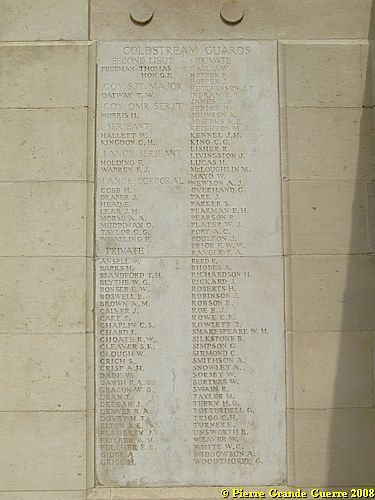
The "town side" of the memorial.
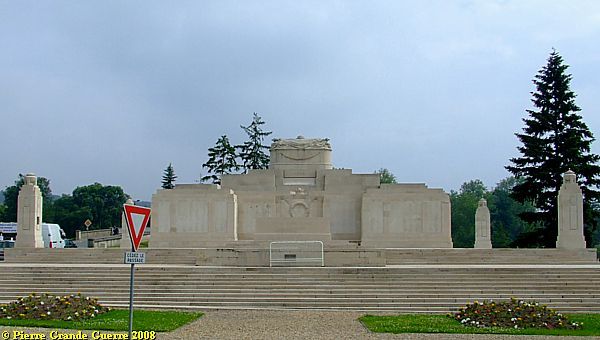
View from the Memorial on the meandering Marne.
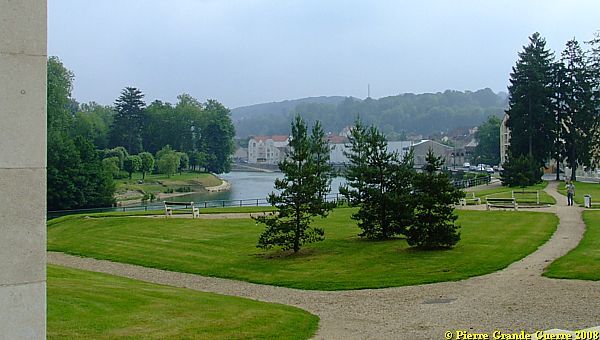
Next to the memorial lies a bridge on a historical location.
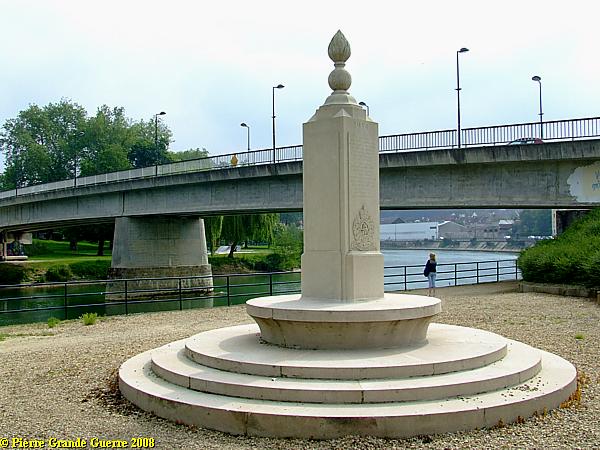
The Pylon commemorates the important action of the 4th Division of Royal Engineers, who builded a pontoon bridge here on 9 September.

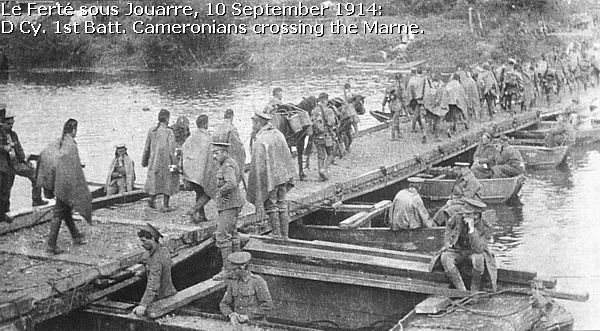
At the end of the day we make a jump eastward.
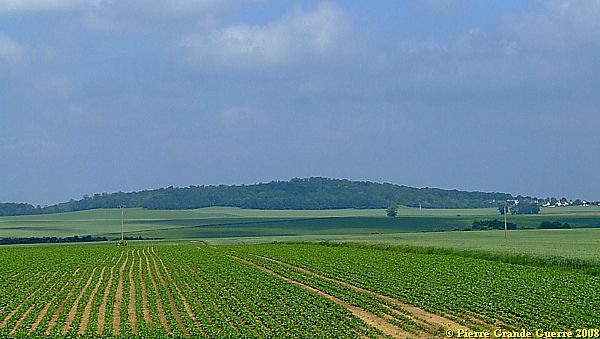
To conclude our trip we visit along the N3 the Montreuil aux Lions British Cemetery .
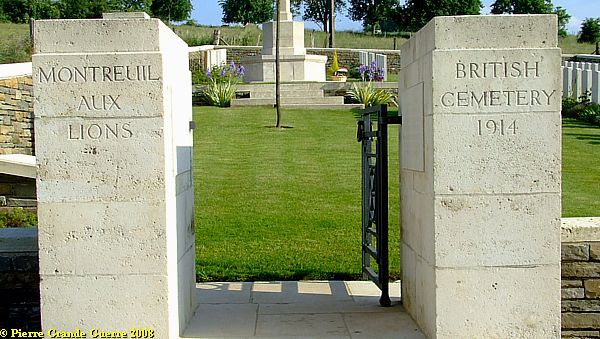
The small cemetery contains 171 burials of the summer of 1914. 102 Of the burials are unidentified, but there are special memorials to 16 casualties, known or believed to be buried among them; in the case of eight men of the 1st Dorset, the special memorial is a panel behind the Cross of Sacrifice. The cemetery also contains the graves of six Second World War airmen.
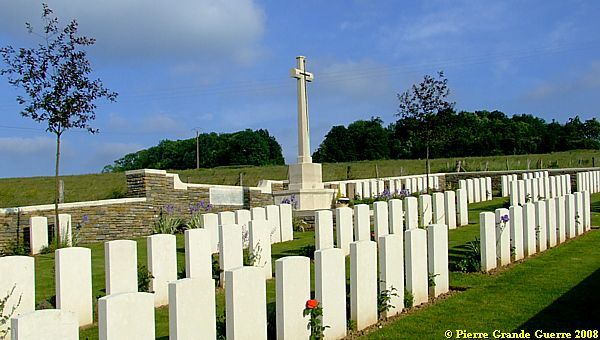
Three graves of soldiers of the Royal Sussex Regiment, fallen on 10 September 1914.
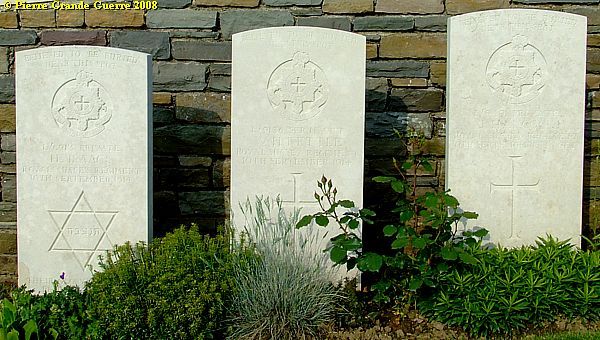
These soldiers of the Kings Royal Rifle Corps and the Royal Sussex regiment fell respectively on 10, 16, and 19 September 1914.
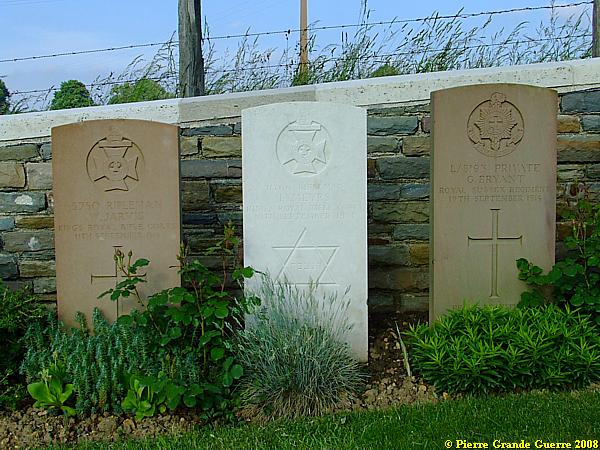
At sunset we conclude our journey along these guilty landscapes with a last view at the Cross of Sacrifice.
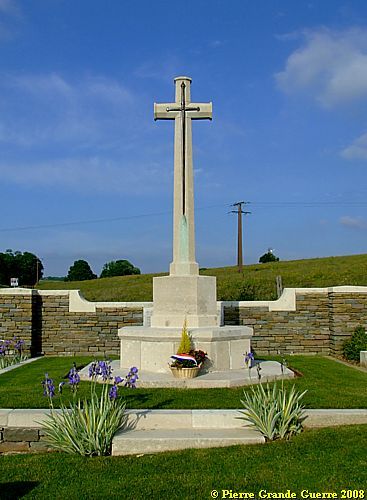
In the next two pages we visit locations in the same region, but this time the locations are related to the Second Battle of the Marne of 1918.
Continue to: " Marne 1918 - Château Thierry - Belleau Wood " or continue directly to " The Second Battle of the Marne - 1918 "










